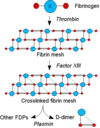Anatomy - Heart Failure Flashcards
(98 cards)
What are the origins of the first and second heart sounds?
First = AV valves closing = low pitched ‘lub’
Second = closing of aortic/pulmonary valve = high pitched ‘dup’
What are the properties of the jugular venous pulse?
- Pulsations in internal jugular vein reflect changes in right atrial pressure
- Visible 2cm above clavicle

What are the third and fourth heart sounds?
Third heart sound = vibration of ventricular wall when filling (hard to hear)
Fourth heart sound = ventricular filling during atrial systole (hard to hear)
When do the aortic and mitral valves open and close?
Aortic:
- Opens during systole
- Closes at start of diastole
Mitral:
- Opens during diastole
- Closes at start of systole
What are the types of abnormal heart sounds?
Murmurs –> excessive noise (high flow or flow in different directions)
Stenosis –> narrowing, creating steep pressure gradient so murmur when valve opens
Leaky valve –> flow can occur in different directions, so murmur when valves should be closed
What drives the intrinsic heart rate?
Pacemaker (SA node) and conduction (AV node)
What things influence heart rate?
Sympathetic nervous system - activation of b-adrenoceptors causes an increase in heart rate
Parasympathetic nervous system – activation of muscarinic receptors causes a decrease in heart rate
Hormones – e.g. adrenaline acting on b-adrenoceptors causes an increase in heart rate
Extra/intracellular ions – alterations in membrane potential (e.g. potassium)
What is the ESV and EDV?
ESV = end systolic volume = blood remaining in ventricle after ventricular contraction
EDV = end diastolic volume = blood in ventricle before contraction
How do you work out cardiac output?
What are the normal values at rest and during exercise?
Cardiace output (litres/min) = stroke volume (litres/beat) X heart rate (b/min)
Rest = 5 L/min
Exercise = 22 L/min
What 3 things determine stroke volume?
- Pre-load –> blood coming back into heart from veins
- Cardiac contractility –> determined by blood present in heart
- After-load –> pressure to push blood out of heart
What is stroke volume?
What influences cardiac output?
Blood ejected from each ventricle in a single heartbeat = difference between EDV and ESV
Influenced by venous return, alongside filling time and atrial contractility
What to remember about cardiac muscle and stretch?
What does the Frank-starling curve show and look like?
Force of contraction of cardiac muscle fibres is proportional to degree of stretch

What factors affect stroke volume and what increases and decreases stroke volume?
- Cardiac contractility
- Aortic pressure and after-load
Increase:
- SNS activity
- Calcium
- Positive inotropic drugs (digoxin)
Decrease:
- SNS activity
- Hypoxia
- Acidosis
- Heart failure
What does the graph of velocity against load look like?

What is happening at and between each letter?


What happens once baroreceptors detect fall in blood pressure?
- Sympathetic outflow from CNS for minute by minute response
- Kidney determines long-term bp restoration
What are all the functions of the kidney?
- Regulation of pH (H+ and HCO3-)
- Removing metabolic waste products
- Production of hormones (e.g. erythropoeitin)
- Activation of vitamin D
- Regulation of osmolarity (control of solute concentrations)
- Regulation of salt concentrations
- Regulation of extracellular fluid volume
What are the properties of the kidneys?
- Receive about 20% of the cardiac output at rest
- Shows good autoregulation i.e. the blood flow stays relatively constant over a wide range of arterial pressures.
- About 20% of the fluid arriving in the kidney is filtered into the renal tubule but then 99% of this is reclaimed.
- This process is intimately linked with sodium reabsorption and is under hormonal control.
What are the functions of the granular and lacula densa and what is the importance of them?

Granular = regulate bp and volume by detecting stretch
Macula densa = monitor salt concentrations
These factors influence first part of renin-angiotensin system
Low volume = renin release
What 3 things trigger renin release?
- Decreased renal perfusion pressure (detected by granular cells)
- Decrease NaCl concentration (detected at the macula densa)
- Increased sympathetic nerve activity (via activation of beta-1 adrenoceptors)
What is the cascade of reactions that happen once renin is released?

What are the actions of angiotensin ii?
- Potent vasoconstrictor – increases peripheral resistance and hence blood pressure
- Enhances sympathetic nerve function
- Increases the release of aldosterone (adrenal gland)
- Promotes thirst
- Release vasopressin (anti-diuretic hormone) from posterior pituitary
- Trophic effects in heart and blood vessels (? Sustain hypertension, cardiac hypertrophy)
- Increase in oxidative stress (? Endothelial cell damage)
What are the actions of vasopressin in CV system?
- Direct vasoconstriction
- Increases number of aquaporin-2 channels in the distal tubules/collecting duct of the kidney – increases fluid retention (produces a more concentrated urine)
- Hence vasopressin is also known as Anti-Diuretic Hormone (ADH)
What are the actions of aldosterone?
- Increase expression of sodium channels
- Activates the sodium potassium pump
- This results in retention of sodium (and water) in the body



















